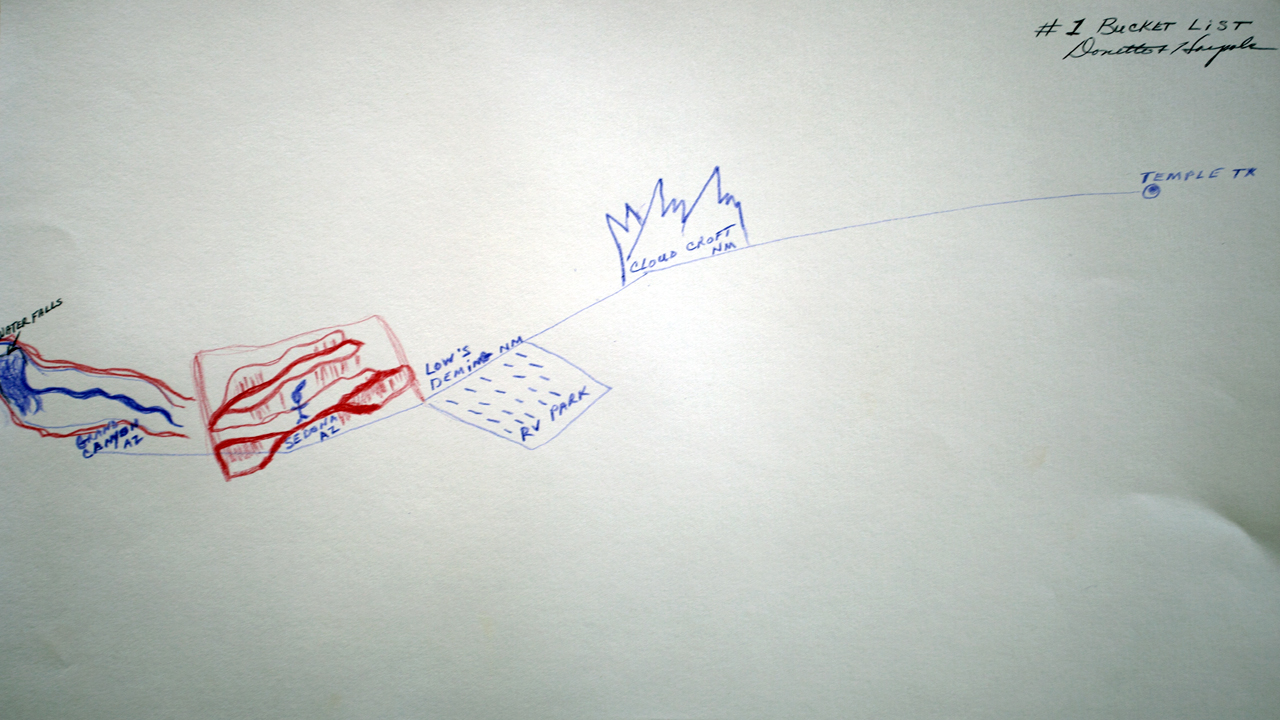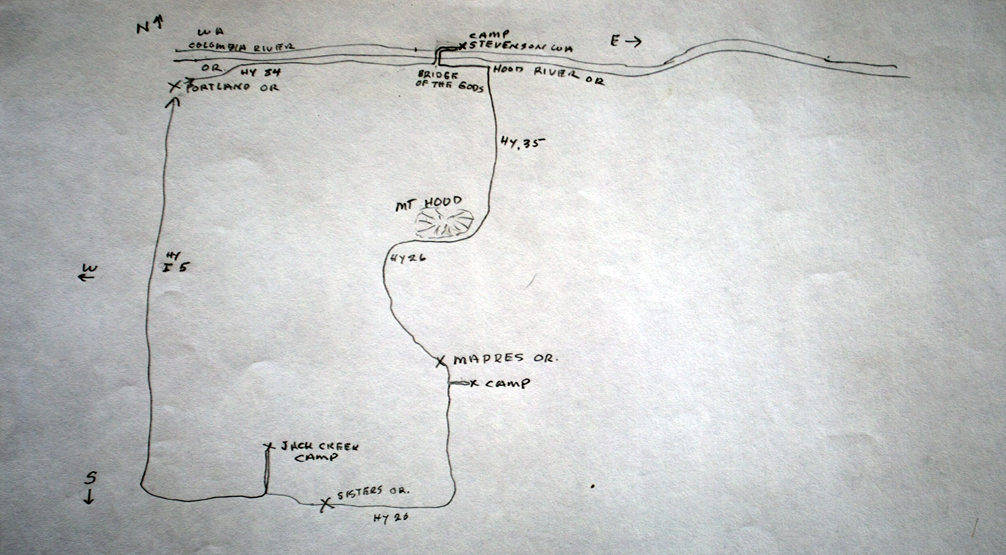Refuge in Going
How can we reach beyond the limited grasp of a singular perspective and consider more collaborative modes of storytelling? This project brings together diverse experiences of the recreational vehicle (RV) dweller in the United States today in order to explore everyday experience through media exercises. The outcomes from this series of exercises formulated part of my doctoral work at the University of Texas at Austin.
But what do these exercises actually look like? Below is an overview of each of these exercises and some of the discoveries.
Mapping
We don't make maps anymore. Before GPS became ubiquitous, we drew maps to give directions or show our friends where we had been on a journey. And maps do something. When we use our bodies to create lines on paper we reflect for a moment on the spacial relationships between where we are and where we were. This reflection is singular and no two maps are the same. For these reasons, this project celebrates the hand drawn map as a method of inquiry between the self and places gone or left to go.
Below are examples of maps made by RVers amidst winter stays in the remote deserts of California or Arizona or the rainy summer in the forests of Oregon. Some rely on lines, others on images or even words. These maps depict the destinations and even happenings chanced upon along the way. Using an increasingly obsolescent graphic method, participants locate themselves within the lines on a two dimensional method.
Photography
Today photographs and their makers are everywhere. In what feels like a few blinks of the eye, we have gone from photography being a pursuit or pastime to a compulsion. Image making today reflects a desire to be seen and show the world what we see. There is substantial motivation in the life of the full time RVer to see. Days and journeys are planned around what might be seen along the way. Hours might be driven in a particular direction to just to see something. Often, the camera is there, as an accomplice and a witness, pulled out of the pocket and put to work.
Below are a series of images exploring what is seen out the windows of RVers as they travel across the country. For this exercise, participants were asked to photograph what they see out their windows. This practice lends a stability and reprieve to mobile lives spent seeking the sights.
Sound Experiments
As a dear friend explained to me once, sound is the most important thing. Sound becomes a part of you, often before you are even aware it exists. Sound presides over vision and articulates to the body how to feel. Sound also opens up space to document life as it is. Whereas sound can be performed, it also happens around us all the time in an unscripted fashion. The following exercises were created to explore sonic life on the road with RVers:
Binaural Sound Walks
Binaural recording allows us to put on and inhabit the hearing experience of the recorder. By recording using two microphones situated in the ears of the participant, we can (of course layered with our own sonic experience in the present) be immersed in the world of the recorder. In order to explore movement and place through binaural recording, in this exercise participants made binaural audio recordings of their everyday walks and places that are special to them. Below you will here an example of this kind of recording. Please listen with headphones for the best results!
Road Response Line
The telephone plays a large role in social connectivity of the RVer out on the road. It is how they keep up with and find one another, as well as how they fill in the family on their well being back home. In order to sustain the role this technology plays in the lives of those on the road, the Road Response Line was created. The Road Response Line is consists of a phone number participants call for a voicemail where they record their thoughts about particular aspects of life on the road. Below is an example where participants were asked to describe their roads ahead:
VIDEO
Time-based media inherently engages with movement. It moves. It moves and shows us, similar to photography, what is seen. But, uniquely, it requires a dedication of time in the viewer, to see what was recorded by the documentarian. In this project, video is used to sustain particular inquiry into arrivals and departures. Participants were asked to record their moments of both, saying alternatively what they think or feel. Below is an example recording by RVlove.com:



















